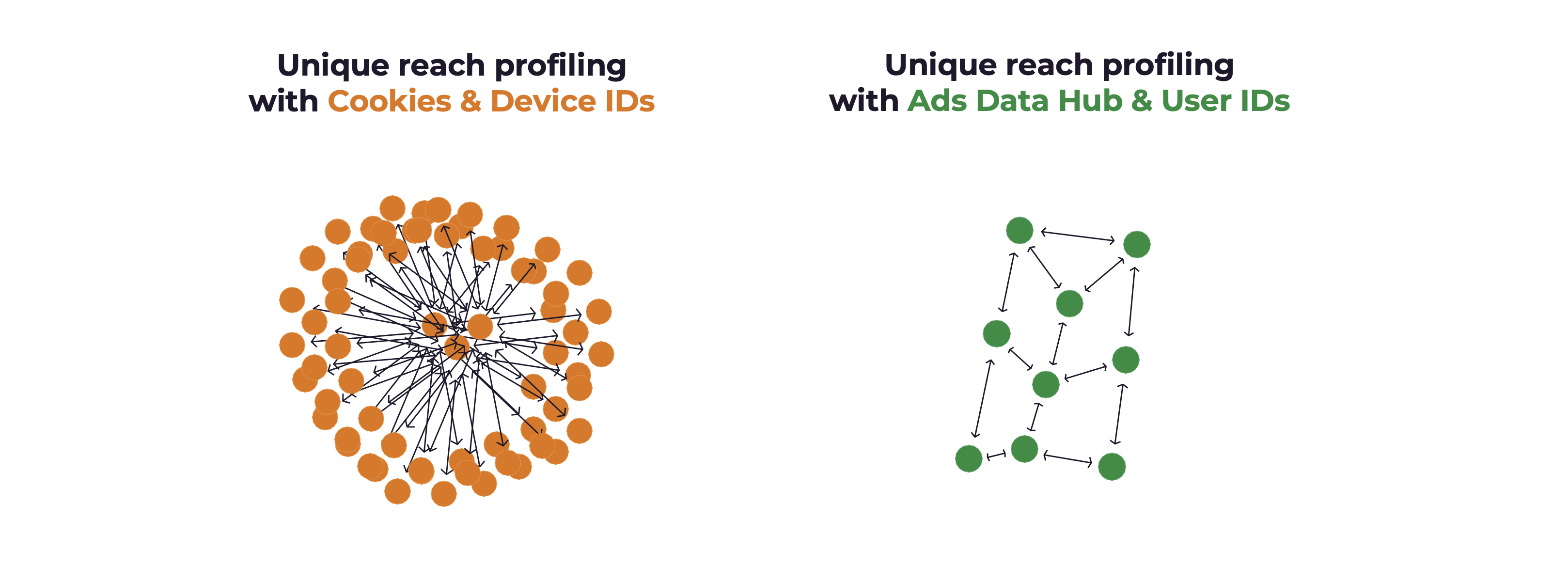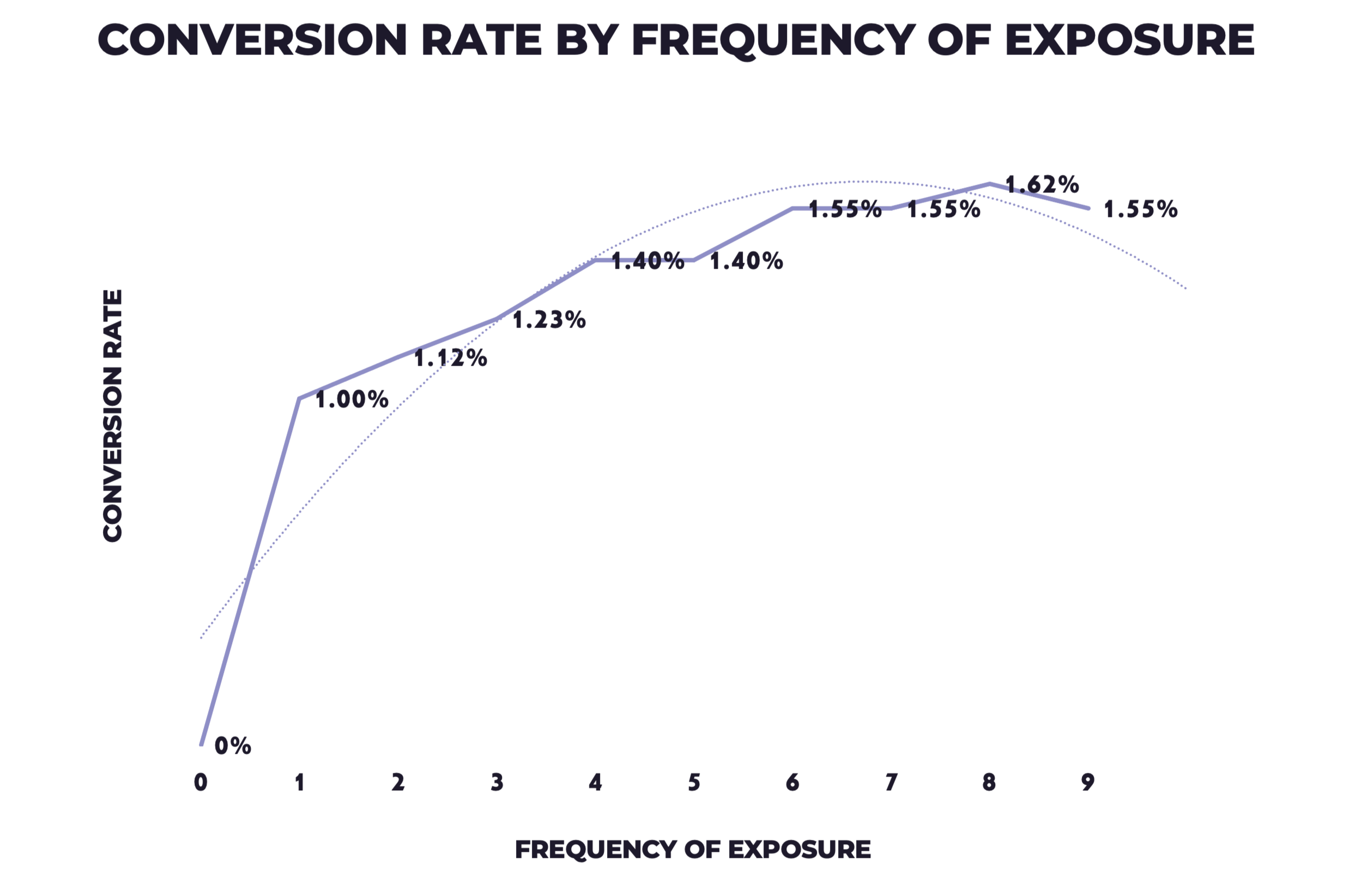Unique Reach & Ads Data Hub: Where programmatic measurement begins
User based media unification using Ads Data Hub

Let’s face it – online display and video ads have an average click-through rate (CTR) of less than 0.50%, and a shocking 50% of those clicks are accidental. So, if you’re relying on clicks to drive the value of your ads, you’re in for a rough ride. In reality, more than 99.75% of the value of display and video ads lies in your ability to use the latest technology to analyze impression-based data and get the most out of your campaigns.
Now, when it comes to brand advertising, it’s all about getting your message out there and making an impact. Clicks aren’t the be-all and end-all, which means that server-side tagging isn’t going to solve all your problems. Instead, advertisers still heavily rely on third-party cookies in users’ browsers to access two vital types of reporting.
The first is reach and frequency metrics – the secret sauce to controlling impression distribution and saturation across audiences. Think unique reach, average frequency, and audience overlap.
The second is post-view data, which allows you to track exposed users and their engagement across various digital properties. We’re talking view-through conversions, converting paths, and more.
In short, if you want to make an impact with your brand advertising, you need to use the right tools and data to get the job done.
Collapsed Measurement
Digital advertising measurement methods have been hit hard by privacy concerns, and as a result, reach and frequency metrics can only provide a rough approximation for less than half of total impressions. When it comes to post-view impacts, the proxy falls even lower, to less than a quarter, thanks to user consent requirements and third-party data collection headaches. This has made frameworks that rely on third-party data messy and unreliable.
With collapsed measurement capabilities, video and display advertisers are left with only vanity metrics like CPM, viewable impressions, cost per video view, and percentage of video completion. As if that wasn’t bad enough, programmatic advertising has also been hit by significant ad fraud, leading to massive waste of marketing budgets. But, with all the challenges come innovative solutions and technologies that can help advertisers overcome these obstacles and achieve more meaningful and accurate measurement of advertising effectiveness. So, it’s time to get creative and think outside the box to ensure that your ad campaigns achieve the desired results.
Ads Data Hub – A Revolution To Programmatic Efficiency
The world of brand advertising is a massive industry worth billions of dollars, and as such, there are plenty of solutions out there to tackle the tricky issue of measurement. And it seems that the most promising solution on the horizon is centered around the use of ‘data clean rooms’ (or modern DMPs). One standout example of this is Google’s self-serve clean room ADH, which allows analysts to access CM360/DV360 ad data that’s attributable to impressions without divulging any personally identifiable information, thanks to some nifty encryption and aggregation techniques.
In simpler terms, if you’re running brand campaigns on Google’s enterprise brand advertising platform (CM360/DV360), you’ll be able to get detailed insights into how many unique users have seen your ads, how frequently, and on which devices, as well as which audiences are being targeted. Plus, you can track customer journeys that lead to sales, both online and offline, across a wide range of publishers, all with unmatched data accuracy. With solutions like this, it’s clear that brand advertisers can look forward to more robust and accurate measurement in the future.
Unique Reach – An Accuracy Challenge
When it comes to branding, understanding how many people have been exposed to an ad at least once over a given period is crucial. That’s where Google’s Unique Reach metric comes in. First introduced in 2012, Unique Reach allows companies to measure the distribution levels of their message across a given population.
In the past, cookies and device graphs were the tech that powered this metric, but with the evolution of privacy, the accuracy of Unique Reach has become mostly dependent on web experiences built around logged-in environments. Essentially, if someone sees a YouTube ad, Google knows exactly who saw it because of their rich logged-in data. However, the advertiser doesn’t necessarily have access to that information since most interactions happen at the impression level.
Thankfully, with the help of Data Clean Rooms, advertisers can ask Google about the audience that saw the ad, how frequently they saw it, which devices they used, and whether that journey ultimately led to a sale. This kind of granular data is incredibly valuable for companies looking to optimize their advertising efforts and ensure that their message is reaching the right people in the right way. So, if you’re looking to take your branding to the next level, it’s time to embrace the power of Unique Reach and Data Clean Rooms!

How does it all translate into concrete action?
Let’s take a theoretical but concrete case where an advertiser wants to introduce a new brand.
By leveraging Ads Data Hub, the advertiser will be able to superpower its ability to transform impressions into money by generating the below data with high confidence.


The above graph illustrates the power of unique reach data, providing three key insights for a new brand:
- ‘’With our current targeting, on average, campaigns generate one sale every time we reach 100 individuals once.’’
- ‘’The largest increase in conversion rate past the first exposure happens when an individual watches on average our commercial 4 times.‘’
- ‘’Beyond 5 to 6 exposures per person, our commercial generates poor incremental results. There is even a negative effect on the conversion rate after 9 unique exposures (brand alienation effect).’’
These valuable insights allow marketers to optimize their advertising investments by targeting individuals who have not been exposed to the commercial yet and avoid over-saturating those who have. By comparing the conversion rate behaviour of exposed individuals to a control group, the graph unlocks the holy grail of brand advertising efficiency.
Final Thoughts
Branding may have its fair share of ad waste, but fear not! We now have the power to finely tune message distribution like never before. Of course, it takes some serious MarTech and Cloud wizards to make it happen. Remember, a fancy tech stack alone won’t magically make money rain down on you!
